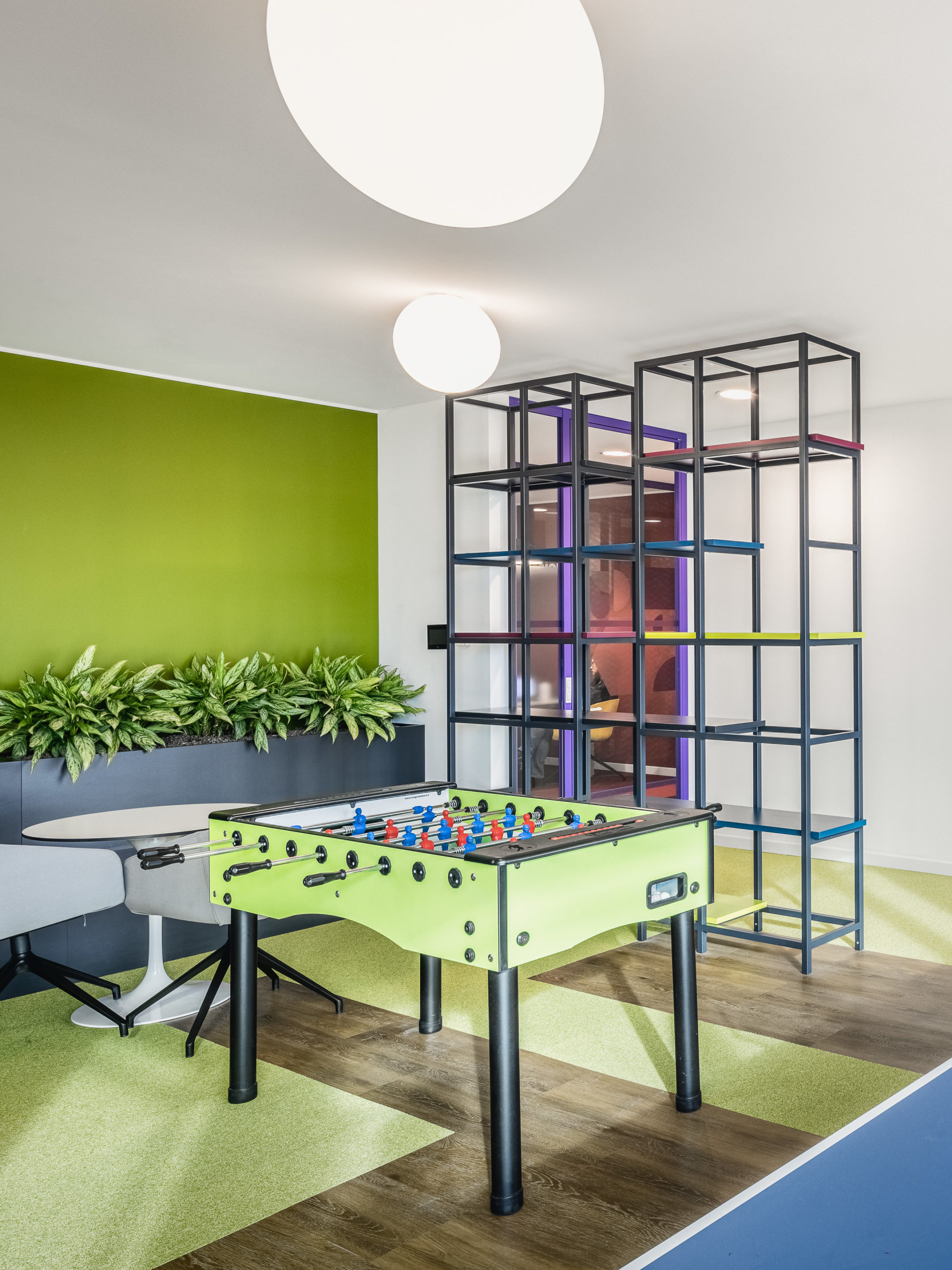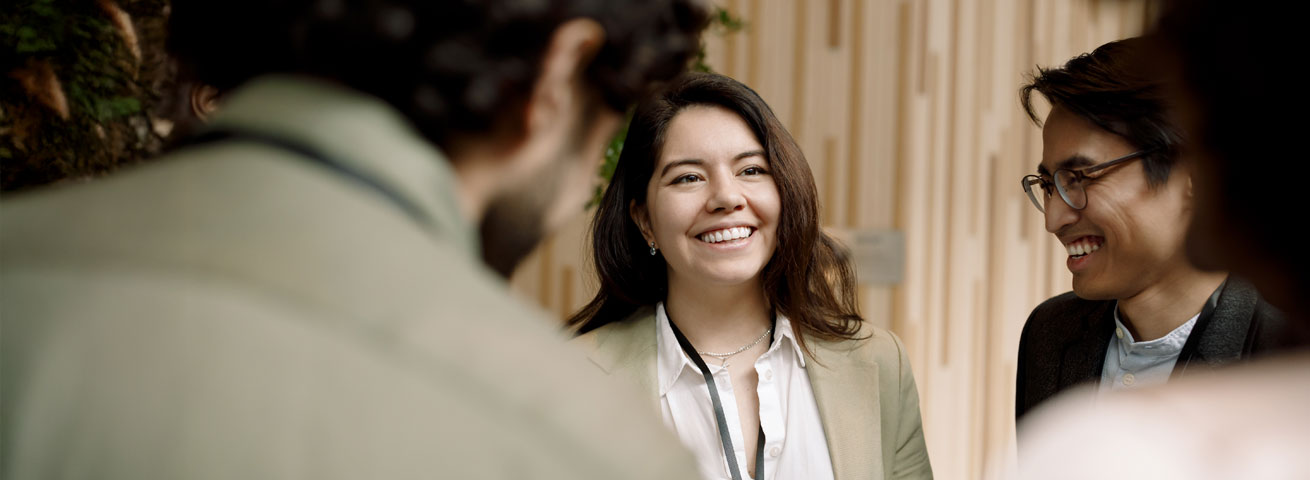Creating spaces with employees in mind can have a vital impact on their wellbeing and performance at work.
With people returning to offices as pandemic restrictions ease, designing the workplace to support new expectations and different ways of working is increasingly top of mind for many businesses. JLL’s Regenerative Workplace research found that relaxation spaces, healthy food services and outdoor spaces are top of the list of employee expectations, yet only a quarter or less of employees have access to these amenities at work. Taking a human-focused design approach that holistically considers what employees need is therefore key to creating a workplace that reenergises people and helps them reconnect and collaborate with colleagues.
Here’s how holistic design can regenerate your space:
New uses for the same space
“One thing we’re seeing is that clients aren’t reducing the office space they’re renting,” says Nuno Fernandes, Design Director EMEA at Tétris. “They want an office that is just as big, but they’re doing away with traditional desk spaces and meeting rooms to develop a regenerative workplace that focuses on different aspects of life.” From a design perspective, this means swapping formal work areas for flexible, collaborative spaces with furniture and partitions that can be moved or taken down according to how the space is going to be used.
This demand for different spaces began before the pandemic, and has accelerated since. “There was already a general shift away from traditional office setups, but the pandemic has forced people to reimagine their space. Companies understand that to appeal to their staff and encourage them back to the office, they have to provide a multifunctional space where staff feel all of their needs are being met,” Fernandes says.

Get your head in the game
For many people, the pandemic led to a decline in mental health that has persisted. Spaces for mindfulness in the office can help assuage stress and anxiety while restoring energy. This can include designating space for fully-immersive meditation rooms, sleep pods and zero-connectivity zones where people can switch off properly.
Designing with diverse needs in mind is vital to create spaces where all employees feel able to work in the way they need.

“When we designed JLL’s new 20 Water Street Office, we took a very inclusive approach as we know that over the pandemic, people have found ways of working that specifically suit them, so we had to design a diverse set of spaces for a diverse set of people,” says Tish Scott, Senior Designer at Tétris UK.
For Scott and her team, this meant having bright, flexible meeting rooms and offices with stunning views over the wharf, but also individual working pods that are tucked away and dimmer for those with light sensitivity. “We wanted to create a library environment in these pods for focused, individual work, or for people who want a bit of quiet while not being completely cut off from everyone,” says Scott. The team complemented these new spaces with biophilic elements throughout, as greenery has been shown to improve mood and also help purify the air.

Bring people together
Isolation and loneliness were particularly challenging during the pandemic, and many people have been keen to return to the office and reconnect with one another. To facilitate this, communal areas could be opened up so people can have those much-missed watercooler chats. “We kept most of the floors open at JLL’s space, with non-fixed partitions for privacy, but also so people could still experience the hubbub of the office comfortably,” Scott explains. Soft-touch curtains have been installed for flexibility in creating different spaces, with tiered, flexible seating in multi-functional areas, as well as a café and bar space that invites socialising while grabbing coffee or making food. “It’s important to ensure that you don’t design every room to do everything,” Scott notes. “Each space should have a distinct feel and function.”

Getting physical
Remote working over the pandemic allowed many employees to achieve a better work-life balance, and this is something that should continue as they return to in-office working. Providing fitness services at work can be an effective way to help people stay active, with positive knock-on effects to their mental health. According to JLL’s Regenerative Workplace report, one third of the workforce doesn’t have access to health and wellbeing amenities – but when they do, the uptake is very high, with 60-70% of employees accessing these services weekly.
“The office shouldn’t be seen as just a place to work, but a place where you can get some exercise done or run errands such as dry cleaning. Offices that offer amenities beyond workspace will see the biggest uptake in people returning,” says Fernandes.
He encourages people to rethink the way they approach workplace design. For example, if you fit out a large boardroom with flexible furniture and movable partitions, you can transform it into a space to host a yoga class. And if you don’t have enough floorspace, you can make arrangements with the local community for activities to improve your staff’s physical wellbeing.

“When we designed our new Casablanca office in Anfaplace, we struck a deal with a local gym and scuba diving school so our staff can look after their physical wellbeing – healthy employees are happy employees,” says Fernandes. And ultimately, healthy, happy employees tend to perform better at work.
In JLL’s 20 Water Street Office, Scott and her team took physical wellness one step further by creating medical bays, parenting rooms, stand-up meeting rooms and standing desks. For gym-goers, there are changing rooms and showering facilities. “People are realising it’s important to carve out time during their working day to move around, so we wanted to support this through design,” concludes Scott.

Let us design your workplace to support health and wellbeing – contact a member of our team today.



